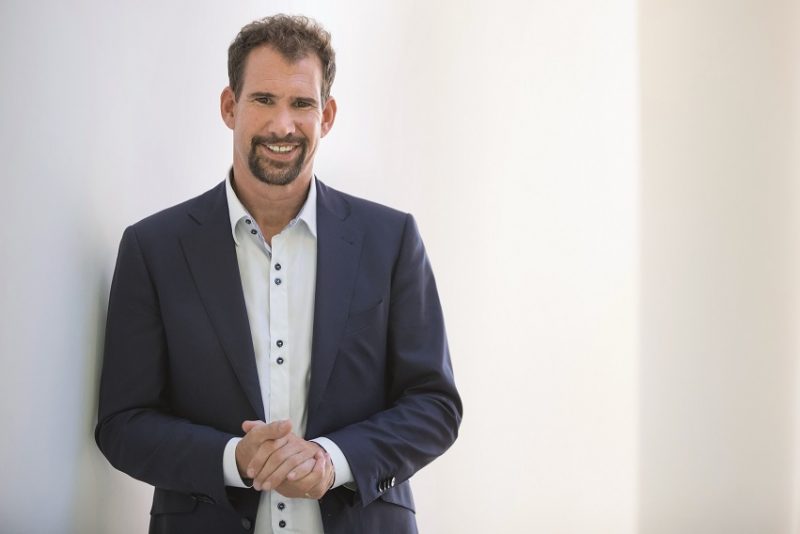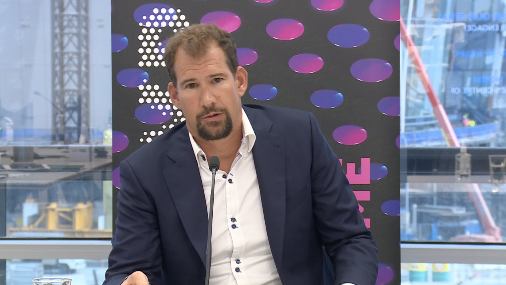
Jens Monsees’ first year as WPP AUNZ CEO ‘feels like a decade’, but he’s only just getting started
WPP appointed Jens Monsees to the top local job just a year ago, but very quickly he faced even more than he bargained for, thanks to a string of crises: bushfires, floods, and a pandemic. He spoke with Mumbrella’s Brittney Rigby about the first year, why WPP AUNZ has been historically bad at integration, and where he’s hoping the holding company will end up.
When Jens Monsees became CEO of WPP AUNZ just over a year ago, he faced a colossal task. The German had to quickly adapt to doing business in a new language, in a country on the other side of the world. He’d never worked in an agency before – his career had largely been spent in companies like BMW and Google – but was suddenly responsible for the local arm of the world’s biggest advertising company and a sprawling portfolio of brands.
And he wasn’t just expected to slip into the advertising behemoth and continue running it as it had been run. Nor was he afforded the luxury of time to slowly implement changes within the business. Monsees had been brought in to overhaul it, and quickly.

The transformation process was always going to be difficult. But he didn’t anticipate just how tumultuous the market would become. First, there were last summer’s bushfires. Then, floods. Then, a global pandemic.
“I obviously came here to carry out, together with the team, a transformation,” he tells Mumbrella. And, as he acknowledges, “transformation is never easy. It’s very intense to understand all the businesses, all the clients, all the different solutions and offerings”.
Within five months of taking on the job, Monsees had unveiled his transformation plan, complete with a new leadership model and a ‘campus’ model, involving WPP AUNZ agencies in smaller markets being united under one profit and loss statement. The ambitious strategy had been discussed “with all the leaders, with the board, with London, at the beginning of the year”.
So when COVID-19 first hit Australia, Monsees was already in implementation mode.
“Luckily, we did our thinking already and then it was easy to follow that track and accelerate,” he explains.
“In Q1, we didn’t earn money. We were loss-making. We also needed to accelerate on implementing our plan, otherwise we would not be so successful as we are now. So it’s a big swing and it’s not over.”
Last week, the company reported third quarter earnings before interest and tax (EBIT) of $24.6m thanks in part to cost cuts – the holding company is rolling out a $70m cost savings program, saving $29m in Q3 – and a $5.9m Jobkeeper injection. Net sales were down 14.3% year on year to $153.6m, but that was a success compared to the market’s drop of 27.1% for the period.
“We did much better than the market and also we did faster implementation than the original plan. We accelerated in crisis, which is a difficult thing to do,” Monsees says.
“There was a lot of competitive brands [within WPP AUNZ] and, now, especially in crisis, we came together closer as a family, collaborating, supporting each other. Some of them [WPP AUNZ agencies] had great success. Some had very difficult time, [their] portfolios was [predominately] tourism or was entertainment, and also retail in a lockdown, and we supported each other.”

The WPP brand portfolio
John Steedman, who transitioned from caretaker chief executive to chief operating officer, before retiring last month, was instrumental in helping Monsees begin to bridge the gap between the WPP AUNZ of the past and the WPP AUNZ the strategy imagines.
Monsees points out that, in the future, WPP AUNZ would ideally sit between traditional holding companies and new, competitive consultancies.
“In the past, whoever was running the company were buying new businesses and new solutions, which was right, but they were not integrated,” he says.
“So they were standalone next to the others, and then you stack up a lot of brands and a lot of silos and solutions.
“The future, in a connected world and a digital[ly] connected world, is to actually be connected and collaborative as well. And that means to integrate. So, fewer but stronger brands.
“And there’s a fantastic sweet spot, because on the one hand, you have consultancies. They do IT implementation, martech implementation, but then they stop and they say, ‘that’s it’. And sometimes you’ll see some puzzled clients saying, ‘Well, we have that new, wonderful marketing cloud, but we don’t necessarily know how to run it most efficiently’.
“And, then on the other side, you have your classical holding companies, which are very much in the traditional areas of the business. And our sweet spot is basically in the middle.”

Monsees presenting at the WPP AUNZ AGM earlier this year
The campus model is perhaps a miniaturised version of Monsees’ bigger vision. The approach has been rolled out in markets like Brisbane, Adelaide and Perth, with singular ‘campus leaders’ and the incentive of one P&L to ensure agencies are invested in each other’s success. So far, it’s been “very good”, Monsees says, but it’s still in its infancy.
“These are remote places and we have several brands active, but we don’t have that many people.
“So sometimes we can shift a very strong social media expert from one client to the other, from one brand to the other, wherever that expert is generating the most value for our partners and clients.
“If you take New Zealand, it was loss making last year and this year it’s much more profitable. The people like to be in one building and collaborate across the brands, but it’s a huge cultural shift. So we are not at the end of it. We are at the beginning.”
Speaking of culture, Monsees adds that he wants people to “feel they can learn something, they can develop, they can grow, they feel empowered”.
“That’s probably what we want to bring to the company and also changing the culture.”
It will inevitably be shaped by COVID-19 though; the pandemic has thrown up a number of thorny questions Monsees knows he has to answer.
“What is the new working model? How many days are in the office? How many people are in the office? Who is working remotely? Who likes more working from home? When is the right time to come in? Is the office, as it is right now, still the right place, or does it need to be more collaborative and less desks but more meeting rooms?
“There’s a lot of things to compile and to consult on and take the right decision.”
It’s only been a year since the executive went from being unknown in Australia to one of the biggest advertising names in the market. “But it feels like a decade,” he laughs. Is it possible to imagine an inaugural year without the threat of the coronavirus?
“It would be, for sure, easier and an easier start,” he admits.
“But I think we made the best out of it. We outperform the market, but I think we would outperform the market with a growing top line and not with the current decrease that we were facing. So 14% is much better than the market [which] was 27%, but it’s still not where I want to be.”
Jens Monsees will be speaking at Mumbrella 360 Reconnected from November 17 – 20, 2020. Grab your tickets here.

